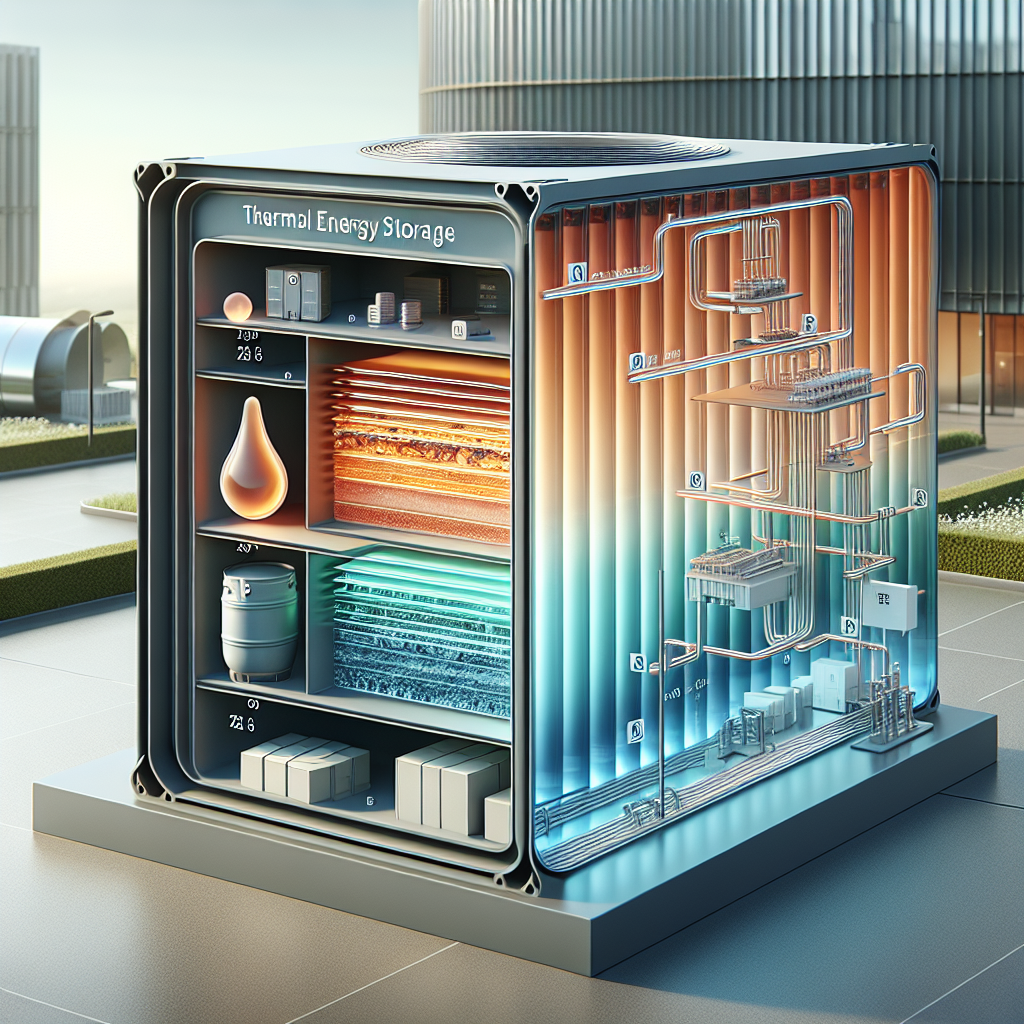Thermal Energy Storage: A Sustainable Way to Cool and Heat
In the quest to balance the growing energy demand with the imperative of sustainability, thermal energy storage (TES) emerges as a promising solution. At its core, TES systems store thermal energy by heating or cooling a storage medium so that the stored energy can be used at a later time for heating and cooling applications, providing a reliable, efficient, and environmentally friendly way to manage energy resources.
Understanding Thermal Energy Storage
Thermal energy storage operates on the principle of storing excess thermal energy during periods of low demand or when renewable energy supply is abundant, and then utilizing this stored energy during periods of high demand. This mechanism not only helps in energy conservation but also plays a crucial role in peak load management, thereby reducing the dependency on fossil fuels and mitigating greenhouse gas emissions.
There are three main types of thermal energy storage systems, classified based on how they store thermal energy:
1. Sensible Heat Storage (SHS): This is the most common form of thermal energy storage, where energy is stored by raising the temperature of a solid or liquid. Water tanks used for storing hot water in residential settings are a basic example of SHS.
2. Latent Heat Storage (LHS): In LHS systems, thermal energy is stored or released through phase changes of a material, typically from solid to liquid or vice versa. The advantage of LHS over SHS is the ability to store more energy in a smaller volume and at a constant temperature.
3. Thermochemical Storage: This method involves chemical reactions that absorb or release heat. Although it is less common than the other two methods, thermochemical storage has the potential for very high energy storage density and long-term storage capabilities.
Applications and Benefits
Cooling and Heating
TES systems are particularly beneficial in cooling and heating applications. For cooling, ice or chilled water TES systems can produce ice or chill water during off-peak hours (usually at night) and use it for air conditioning during the day, reducing the need for electricity during peak demand times. For heating, TES systems can store heat in hot water or molten salts, which can then be used for space heating or domestic hot water supply.
Renewable Energy Integration
TES also facilitates the integration of renewable energy sources like solar and wind into the energy grid. By storing excess energy produced during peak production times, TES systems help in smoothing out the supply, making renewable energy sources more reliable and grid-friendly.
Economic and Environmental Benefits
By enabling more efficient energy use and supporting renewable energy integration, TES systems offer significant economic benefits, including reduced energy costs and decreased investment in grid infrastructure. Environmentally, the reduction in fossil fuel use and greenhouse gas emissions is a critical advantage, making TES a key technology in the transition towards a more sustainable energy future.
Challenges
Despite the benefits, the widespread adoption of TES faces challenges. High upfront costs, space requirements, and the need for specific technologies to integrate TES with existing systems are significant hurdles. Moreover, the efficiency of TES systems can be affected by thermal losses over time, requiring advanced materials and technologies to minimize energy loss.
FAQs
What is Thermal Energy Storage?
Thermal energy storage is a technology that allows excess thermal energy to be stored and used at a later time, offering a sustainable way to manage energy for heating and cooling purposes.
How does Thermal Energy Storage work?
TES works by storing thermal energy in a storage medium through heating or cooling processes. This stored energy can then be used later for various applications, such as space heating, cooling, or providing hot water.
What are the types of Thermal Energy Storage?
The three main types of TES are Sensible Heat Storage, Latent Heat Storage, and Thermochemical Storage, each utilizing different methods for storing thermal energy.
What are the benefits of Thermal Energy Storage?
TES offers numerous benefits, including improved energy efficiency, reduced peak energy demand, support for renewable energy integration, economic savings, and environmental advantages by reducing greenhouse gas emissions.
What are the challenges facing Thermal Energy Storage?
Challenges include high initial costs, spatial requirements, integration with existing systems, and thermal losses that can affect efficiency. Addressing these challenges is crucial for the broader adoption of TES technologies.
How does Thermal Energy Storage support sustainability?
By improving the efficiency of energy use, reducing reliance on fossil fuels, and aiding the integration of renewable energy sources, TES plays a significant role in advancing sustainability goals.
Thermal energy storage stands out as a versatile and efficient solution for managing the world’s energy needs sustainably. Despite its challenges, the ongoing advancements in materials science and energy technologies promise to overcome these hurdles, paving the way for broader adoption of TES systems. As the world continues to seek sustainable solutions for energy production and consumption, thermal energy storage remains a beacon of hope, promising a cleaner, more efficient, and sustainable future.

